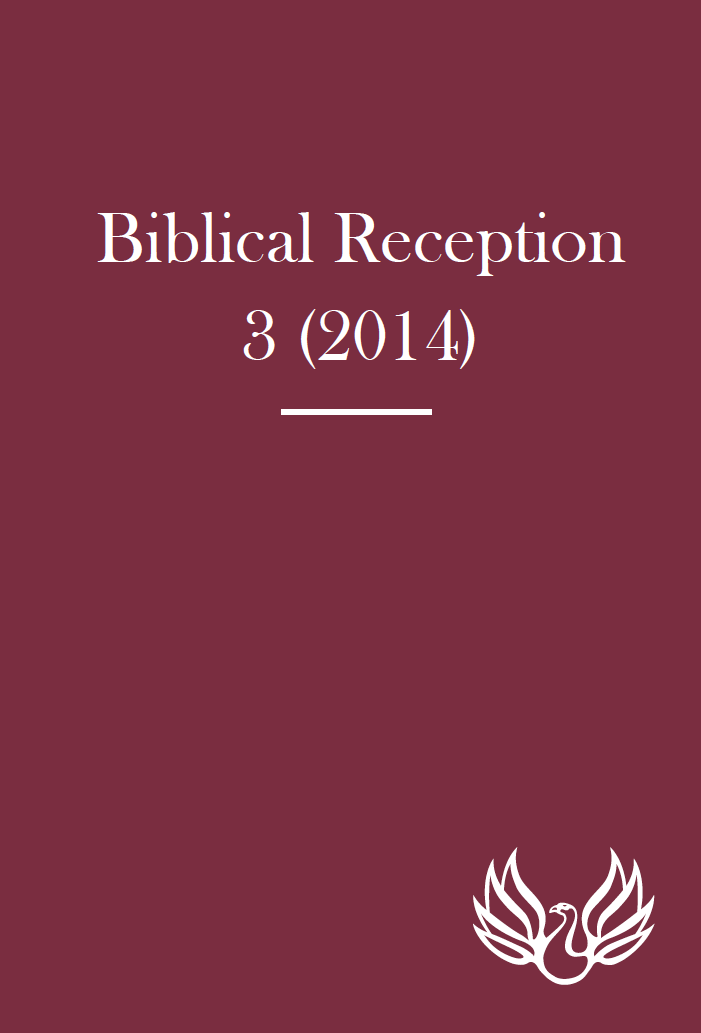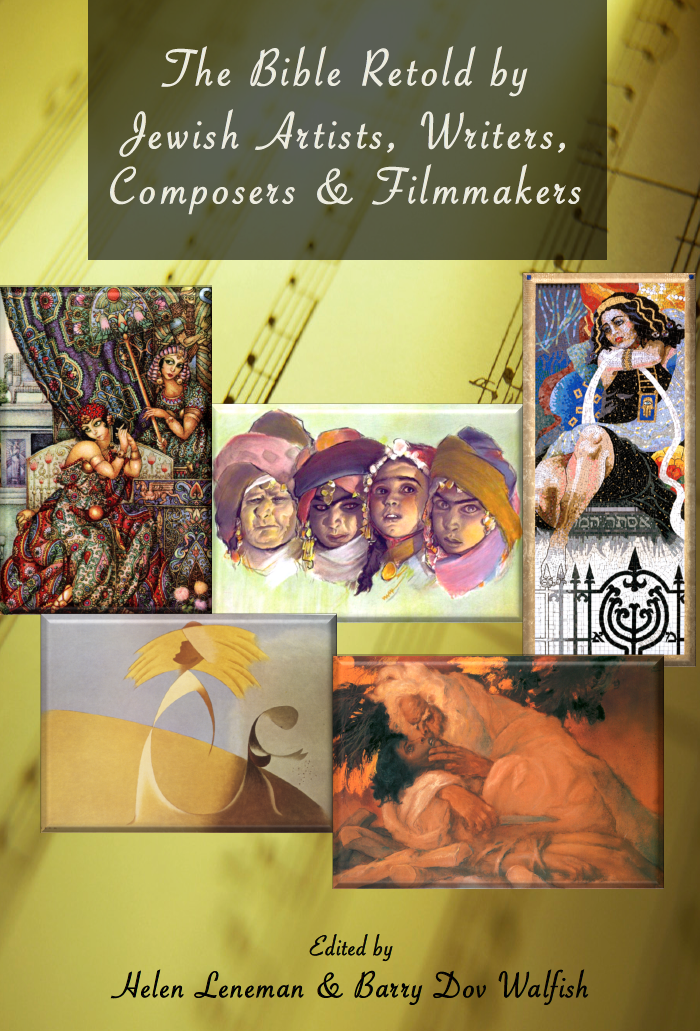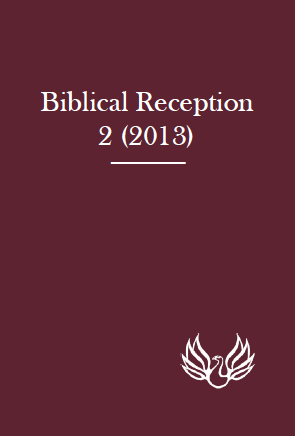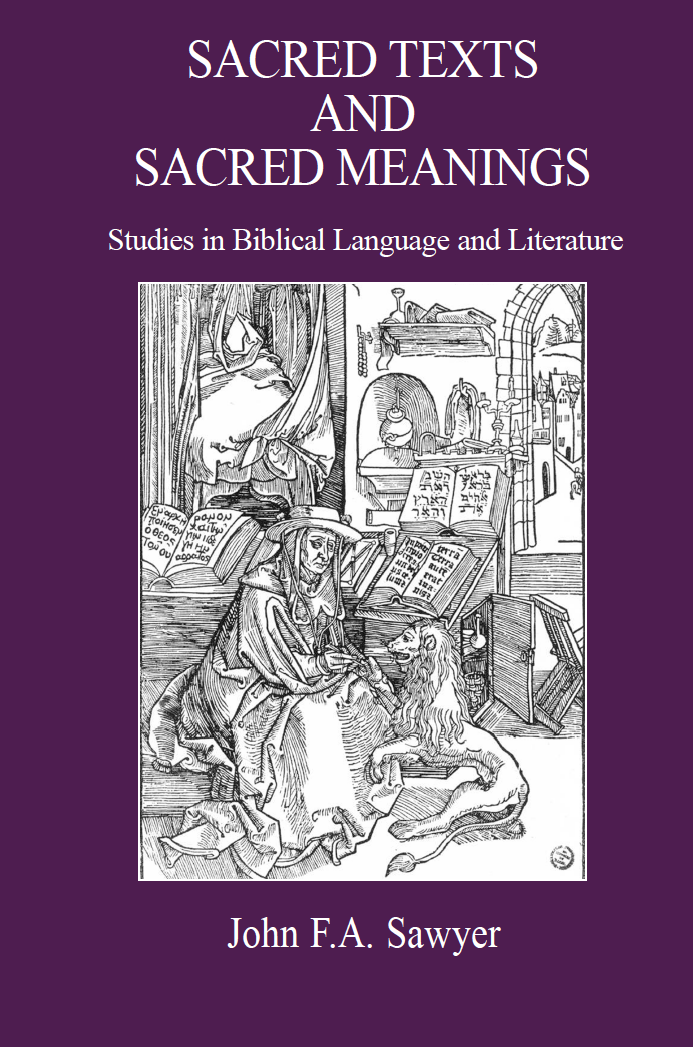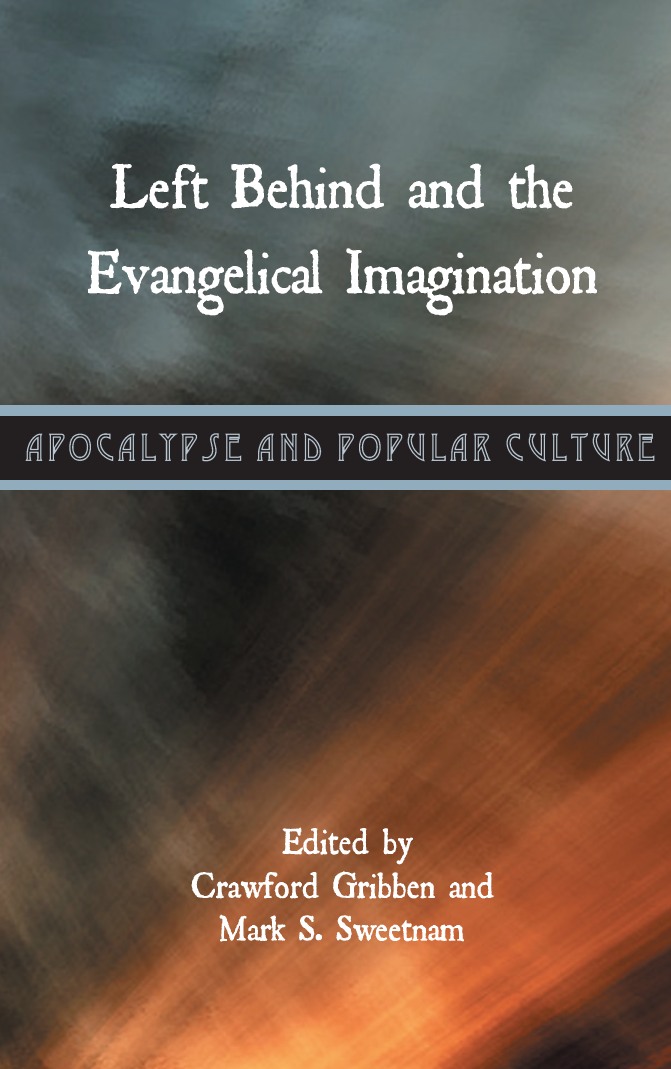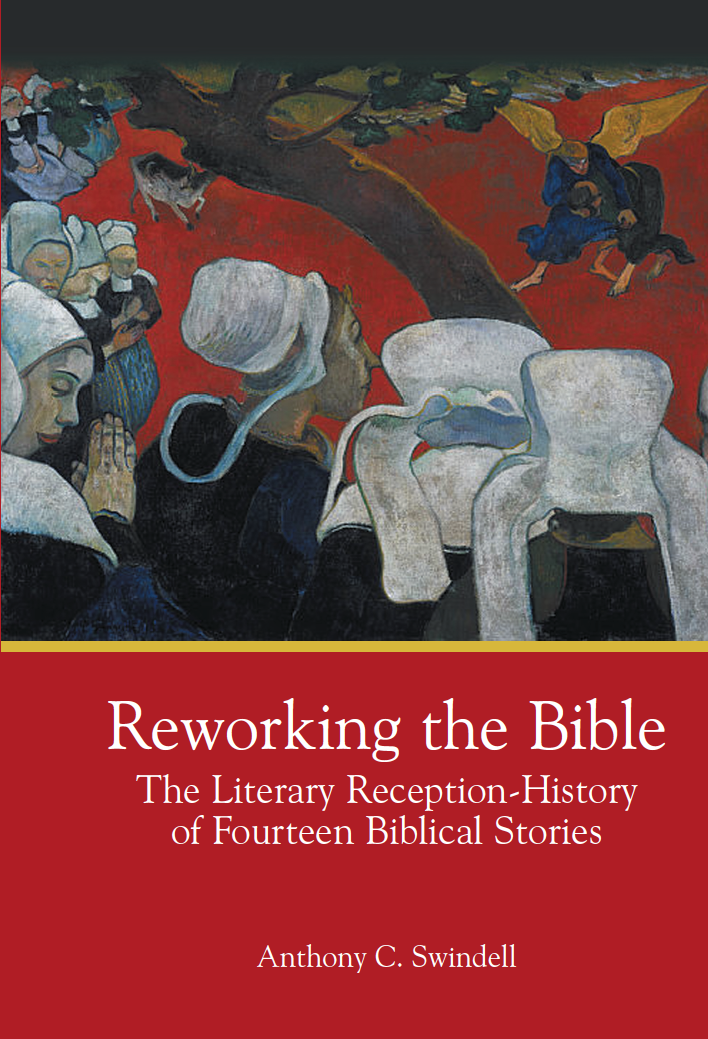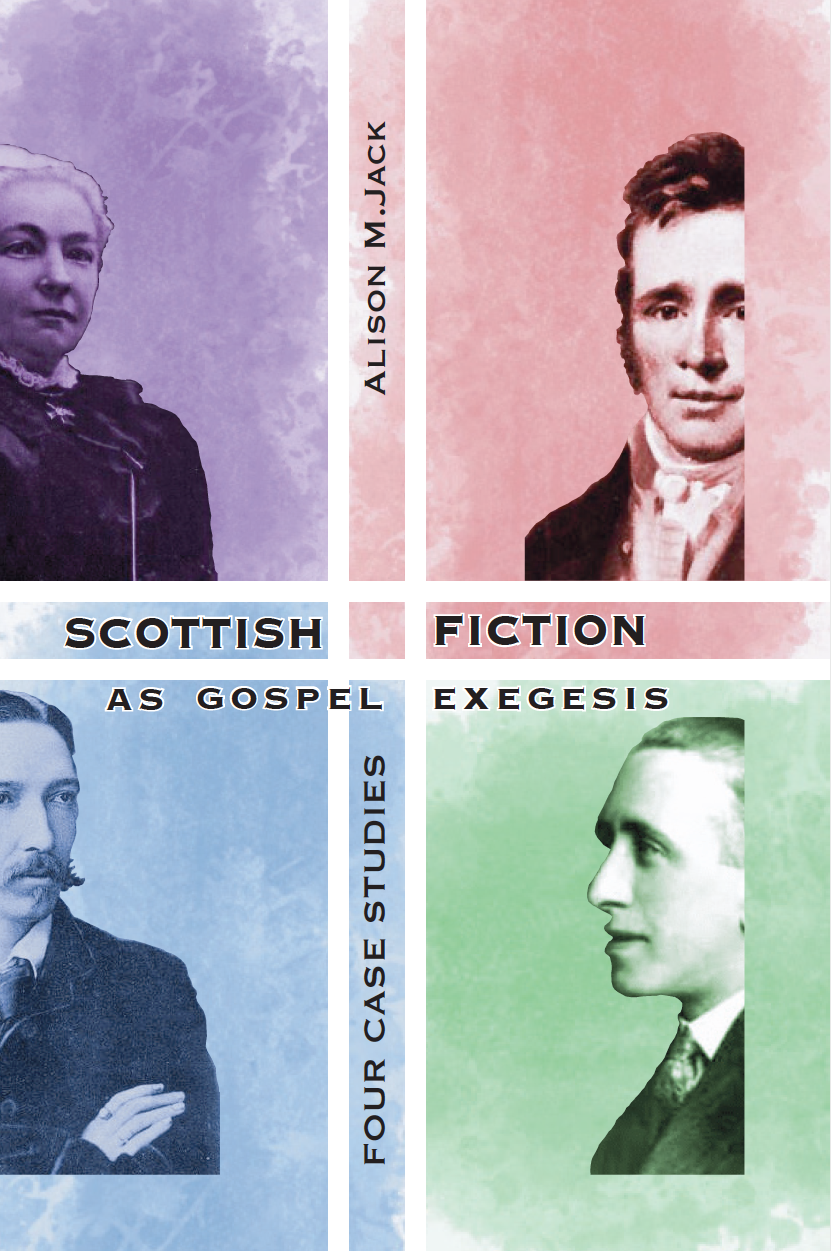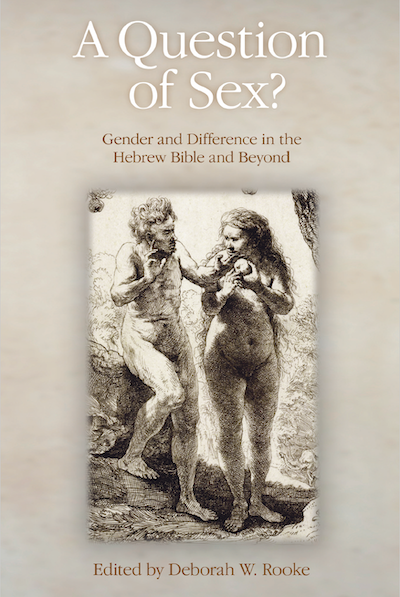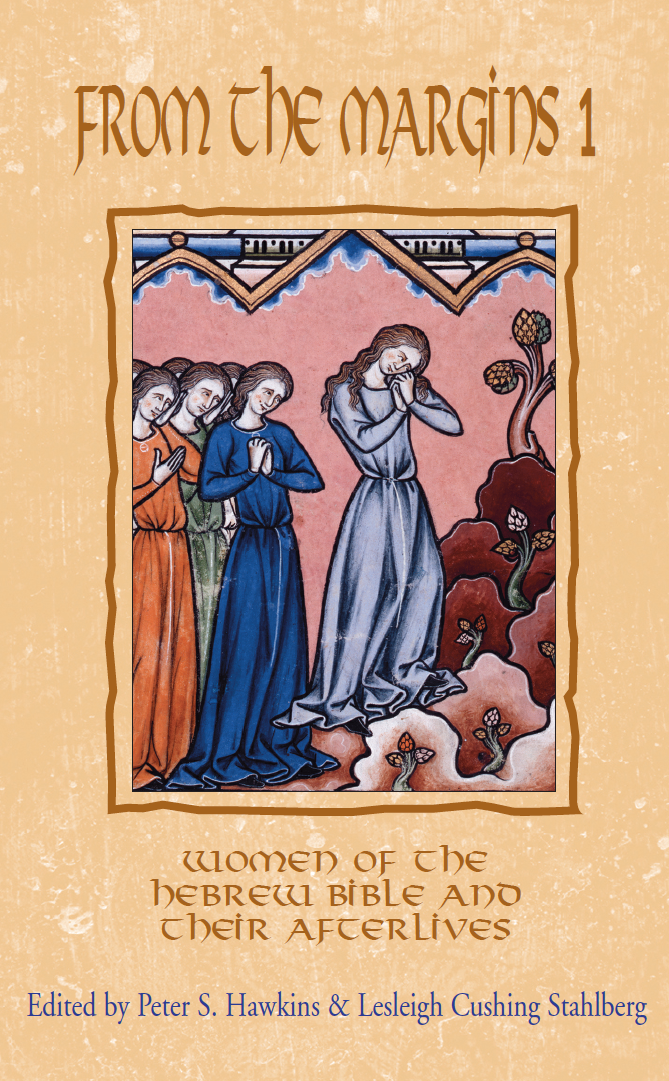Biblical Reception 3 (2014)
Published: Oct 2015
£80.00
This is the third volume of the journal, Biblical Reception (BibRec), published in November 2013. When we founded the journal our policy was this: it was high time, we believed, for the new and burgeoning field of the reception of the Bible to have a publication medium of its own. What the biblical text has meant to its readers down the centuries should be as much the subject of scholarly attention as any 'original' meaning. Our journal was a substantial annual volume covering all kinds of use of the Bible — in art, literature, music, film and popular culture, as well as in the history of interpretation.
Editorial Board Diane Apostolos-Cappadona (Washington, DC), Alan Cooper (New York), James Crossley (Sheffield), Andrew Davies (Birmingham), Tamara C. Eskenazi (Los Angeles), Philip Esler (Gloucester), Susanne Gillmayr-Bucher (Linz), John Harvey (Aberystwyth), Christine Joynes (Oxford), Carol Newsom (Atlanta), Martin O'Kane (Lampeter), Tina Pippin (Decatur, GA), John F.A. Sawyer (Durham), Reinhold Zwick (Münster).
Biblical Reception 3 (2014)
£80.00
This is the third volume of the journal, Biblical Reception (BibRec), published in November 2013. When we founded the journal our policy was this: it was high time, we believed, for the new and burgeoning field of the reception of the Bible to have a publication medium of its own. What the biblical text has meant to its readers down the centuries should be as much the subject of scholarly attention as any 'original' meaning. Our journal was a substantial annual volume covering all kinds of use of the Bible — in art, literature, music, film and popular culture, as well as in the history of interpretation.
Editorial Board Diane Apostolos-Cappadona (Washington, DC), Alan Cooper (New York), James Crossley (Sheffield), Andrew Davies (Birmingham), Tamara C. Eskenazi (Los Angeles), Philip Esler (Gloucester), Susanne Gillmayr-Bucher (Linz), John Harvey (Aberystwyth), Christine Joynes (Oxford), Carol Newsom (Atlanta), Martin O'Kane (Lampeter), Tina Pippin (Decatur, GA), John F.A. Sawyer (Durham), Reinhold Zwick (Münster).
The Bible Retold by Jewish Artists, Writers, Composers and Filmmakers
Published: Oct 2015
£60.00
Helen Leneman and Barry Dov Walfish, both specialists in biblical reception history, have compiled an unusually rich collection of new essays by experts in their fields. This book is a pioneering attempt to portray and analyse the visions of twentieth- and twenty-first century Jewish artists working in different media —visual art, literature (novels, poetry and short stories), music (opera, oratorio and song), and film —who have retold biblical narratives through their art. Reading these essays together will bring a new appreciation and understanding of what makes the perspective of these visual artists, writers, composers and filmmakers on the Hebrew Bible uniquely Jewish.
All of these Jewish visions can be considered a form of modern midrash, as the artists imaginatively fill in gaps in the biblical narrative, bringing a modern sensibility to the meanings of the stories.
Under the heading 'Biblical Women', the stories of the matriarchs, Hagar, and other biblical women are re-imagined in the visual arts, poetry and music. Several further chapters focus on the story of the Aqedah (Binding of Isaac), as represented in the visual arts, literature and music. Other retellings of biblical narratives through short stories are then examined, while yet other chapters explore the books of Esther and Psalms as envisioned and retold in the visual arts, opera, literature and film.
These retellings, analysed and discussed by the authors of this ground-breaking volume, will stimulate the reader to view the texts in new ways or to confront their challenge to personal or traditional interpretations of those texts.
The Bible Retold by Jewish Artists, Writers, Composers and Filmmakers
£60.00
Helen Leneman and Barry Dov Walfish, both specialists in biblical reception history, have compiled an unusually rich collection of new essays by experts in their fields. This book is a pioneering attempt to portray and analyse the visions of twentieth- and twenty-first century Jewish artists working in different media —visual art, literature (novels, poetry and short stories), music (opera, oratorio and song), and film —who have retold biblical narratives through their art. Reading these essays together will bring a new appreciation and understanding of what makes the perspective of these visual artists, writers, composers and filmmakers on the Hebrew Bible uniquely Jewish.
All of these Jewish visions can be considered a form of modern midrash, as the artists imaginatively fill in gaps in the biblical narrative, bringing a modern sensibility to the meanings of the stories.
Under the heading 'Biblical Women', the stories of the matriarchs, Hagar, and other biblical women are re-imagined in the visual arts, poetry and music. Several further chapters focus on the story of the Aqedah (Binding of Isaac), as represented in the visual arts, literature and music. Other retellings of biblical narratives through short stories are then examined, while yet other chapters explore the books of Esther and Psalms as envisioned and retold in the visual arts, opera, literature and film.
These retellings, analysed and discussed by the authors of this ground-breaking volume, will stimulate the reader to view the texts in new ways or to confront their challenge to personal or traditional interpretations of those texts.
Biblical Reception 2
Published: Oct 2012
£80.00
This is the second volume of the new journal, Biblical Reception (BibRec), published in November 2013. For the first volume, click here.
Our policy for the journal is this. It is high time, we believe, for the new and burgeoning field of the reception of the Bible to have a publication medium of its own. What the biblical text has meant to its readers down the centuries should be as much the subject of scholarly attention as any 'original' meaning.
Our journal is a substantial annual volume covering all kinds of use of the Bible — in art, literature, music, film and popular culture, as well as in the history of interpretation.
Biblical Reception 2
£80.00
This is the second volume of the new journal, Biblical Reception (BibRec), published in November 2013. For the first volume, click here.
Our policy for the journal is this. It is high time, we believe, for the new and burgeoning field of the reception of the Bible to have a publication medium of its own. What the biblical text has meant to its readers down the centuries should be as much the subject of scholarly attention as any 'original' meaning.
Our journal is a substantial annual volume covering all kinds of use of the Bible — in art, literature, music, film and popular culture, as well as in the history of interpretation.
Biblical Reception 1
Published: Oct 2012
£80.00
This is the first volume of a new journal, Biblical Reception (BibRec), published in November 2012.
It is high time, we believe, for the new and burgeoning field of the reception of the Bible to have a publication medium of its own. What the biblical text has meant to its readers down the centuries should be as much the subject of scholarly attention as any ‘original’ meaning.
Our new journal is a substantial annual volume covering all kinds of use of the Bible — in art, literature, music, film and popular culture, as well as in the history of interpretation.
Editorial Board Diane Apostolos-Cappadona (Washington, DC), Alan Cooper (New York), James Crossley (Sheffield), Andrew Davies (Birmingham), Tamara C. Eskenazi (Los Angeles), Philip Esler (Gloucester), Susanne Gillmayr-Bucher (Linz), John Harvey (Aberystwyth), Christine Joynes (Oxford), Carol Newsom (Atlanta), Martin O'Kane (Lampeter), Tina Pippin (Decatur, GA), John F.A. Sawyer (Durham), Reinhold Zwick (Münster).
Biblical Reception 1
£80.00
This is the first volume of a new journal, Biblical Reception (BibRec), published in November 2012.
It is high time, we believe, for the new and burgeoning field of the reception of the Bible to have a publication medium of its own. What the biblical text has meant to its readers down the centuries should be as much the subject of scholarly attention as any ‘original’ meaning.
Our new journal is a substantial annual volume covering all kinds of use of the Bible — in art, literature, music, film and popular culture, as well as in the history of interpretation.
Editorial Board Diane Apostolos-Cappadona (Washington, DC), Alan Cooper (New York), James Crossley (Sheffield), Andrew Davies (Birmingham), Tamara C. Eskenazi (Los Angeles), Philip Esler (Gloucester), Susanne Gillmayr-Bucher (Linz), John Harvey (Aberystwyth), Christine Joynes (Oxford), Carol Newsom (Atlanta), Martin O'Kane (Lampeter), Tina Pippin (Decatur, GA), John F.A. Sawyer (Durham), Reinhold Zwick (Münster).
Beyond the Quest for the Historical Jesus: Memoir of a Discovery
Published: Sep 2012
£18.95
In the past forty years, while historical-critical studies were seeking with renewed intensity to reconstruct events behind the biblical texts, not least the life of Jesus, two branches of literary studies were finally reaching maturity. First, researchers were recognizing that many biblical texts are rewritings or transformations of older texts that still exist, thus giving a clearer sense of where the biblical texts came from; and second, studies in the ancient art of composition clarified the biblical texts' unity and purpose, that is to say, where biblical texts were headed.
The primary literary model behind the gospels, Brodie argues, is the biblical account of Elijah and Elisha, as R.E. Brown already saw in 1971. In this fascinating memoir of his life journey, Tom Brodie, Irishman, Dominican priest, and biblical scholar, recounts the steps he has taken, in an eventful life in many countries, to his conclusion that the New Testament account of Jesus is essentially a rewriting of the Septuagint version of the Hebrew Bible, or, in some cases, of earlier New Testament texts. Jesus' challenge to would-be disciples (Luke 9.57-62), for example, is a transformation of the challenge to Elijah at Horeb (1 Kings 19), while his journey from Jerusalem and Judea to Samaria and beyond (John 2.23 —4.54) is deeply indebted to the account of the journey of God's Word in Acts 1 —8.
The work of tracing literary indebtedness and art is far from finished but it is already possible and necessary to draw a conclusion: it is that, bluntly, Jesus did not exist as a historical individual. This is not as negative as may at first appear. In a deeply personal coda, Brodie begins to develop a new vision of Jesus as an icon of God's presence in the world and in human history.
Beyond the Quest for the Historical Jesus: Memoir of a Discovery
£18.95
In the past forty years, while historical-critical studies were seeking with renewed intensity to reconstruct events behind the biblical texts, not least the life of Jesus, two branches of literary studies were finally reaching maturity. First, researchers were recognizing that many biblical texts are rewritings or transformations of older texts that still exist, thus giving a clearer sense of where the biblical texts came from; and second, studies in the ancient art of composition clarified the biblical texts' unity and purpose, that is to say, where biblical texts were headed.
The primary literary model behind the gospels, Brodie argues, is the biblical account of Elijah and Elisha, as R.E. Brown already saw in 1971. In this fascinating memoir of his life journey, Tom Brodie, Irishman, Dominican priest, and biblical scholar, recounts the steps he has taken, in an eventful life in many countries, to his conclusion that the New Testament account of Jesus is essentially a rewriting of the Septuagint version of the Hebrew Bible, or, in some cases, of earlier New Testament texts. Jesus' challenge to would-be disciples (Luke 9.57-62), for example, is a transformation of the challenge to Elijah at Horeb (1 Kings 19), while his journey from Jerusalem and Judea to Samaria and beyond (John 2.23 —4.54) is deeply indebted to the account of the journey of God's Word in Acts 1 —8.
The work of tracing literary indebtedness and art is far from finished but it is already possible and necessary to draw a conclusion: it is that, bluntly, Jesus did not exist as a historical individual. This is not as negative as may at first appear. In a deeply personal coda, Brodie begins to develop a new vision of Jesus as an icon of God's presence in the world and in human history.
Sacred Texts and Sacred Meanings: Studies in Biblical Language and Literature
Published: Jun 2011
£75.00
John Sawyer has been known for over 40 years as one of the finest British biblical scholars, always alert to new perspectives in biblical criticism and a pioneer in fruitful applications of new, often interdisciplinary, research methods. He has been an inspiring teacher to generations of students in Glasgow (1964-65), Newcastle upon Tyne (1965-94), Lancaster (1994-2002) and Oxford (2005-2008). From the very beginning he saw the need to apply sound linguistic theory to the study of the Bible, with the fundamental insight that all texts can have, and very often have had, more than one meaning.
No one meaning can claim priority over the others, he argues. The 'original meaning', more or less convincingly reconstructed by modern scholarship, can claim chronological priority, but that is all. What the text has meant to its Jewish and Christian readers down the centuries should be as much the subject of scholarly attention as any 'original' meaning. This is the unifying strand in the whole of his work, from his groundbreaking Semantics in Biblical Research: New Methods of Defining Hebrew Words for Salvation (1972) and his From Moses to Patmos: New Perspectives in Old Testament Study (1977) to his fascinating The Fifth Gospel: Isaiah in the History of Christianity (1996) and his Sacred Languages and Sacred Texts (1999). Among his most recent major contributions in this area have been his co-editorship of the Blackwell Bible Commentary Series, his edited Blackwell Companion to the Bible and Culture (2006) and his own Concise Dictionary of the Bible and its Reception (2009).
In 2011 John Sawyer has been elected President of the Society for Old Testament Study, and to celebrate that appointment Sheffield Phoenix Press is honoured to present this representative selection of 46 of his papers, some previously unpublished and some originally published in rather obscure places.
Sacred Texts and Sacred Meanings: Studies in Biblical Language and Literature
£75.00
John Sawyer has been known for over 40 years as one of the finest British biblical scholars, always alert to new perspectives in biblical criticism and a pioneer in fruitful applications of new, often interdisciplinary, research methods. He has been an inspiring teacher to generations of students in Glasgow (1964-65), Newcastle upon Tyne (1965-94), Lancaster (1994-2002) and Oxford (2005-2008). From the very beginning he saw the need to apply sound linguistic theory to the study of the Bible, with the fundamental insight that all texts can have, and very often have had, more than one meaning.
No one meaning can claim priority over the others, he argues. The 'original meaning', more or less convincingly reconstructed by modern scholarship, can claim chronological priority, but that is all. What the text has meant to its Jewish and Christian readers down the centuries should be as much the subject of scholarly attention as any 'original' meaning. This is the unifying strand in the whole of his work, from his groundbreaking Semantics in Biblical Research: New Methods of Defining Hebrew Words for Salvation (1972) and his From Moses to Patmos: New Perspectives in Old Testament Study (1977) to his fascinating The Fifth Gospel: Isaiah in the History of Christianity (1996) and his Sacred Languages and Sacred Texts (1999). Among his most recent major contributions in this area have been his co-editorship of the Blackwell Bible Commentary Series, his edited Blackwell Companion to the Bible and Culture (2006) and his own Concise Dictionary of the Bible and its Reception (2009).
In 2011 John Sawyer has been elected President of the Society for Old Testament Study, and to celebrate that appointment Sheffield Phoenix Press is honoured to present this representative selection of 46 of his papers, some previously unpublished and some originally published in rather obscure places.
Left Behind and the Evangelical Imagination
Published: May 2011
£50.00
Left Behind — twelve novels that dramatize one evangelical perspective on the end of the world — is now established as the best-selling fictional series in American literary history. But it has been met with a range of critical receptions. This volume gathers essays by new and established critics of the series to interrogate the series' significance and its cultural and commercial success, and includes, for the first time, a response to these criticisms written on behalf of one of the series' authors.
Mark S. Sweetnam considers the challenge that the organically theological nature of Left Behind has posed for cultural scholars. Amy Frykholm situates the novels' discussion of gender within wider traditions of sentimental and domestic fiction. Jennie Chapman nuances the general assumption that the series' conspiracy plots have been poached from secular accounts of subversion that emerged from the radical Right. Crawford Gribben contextualizes the treatment of Jews and Muslims in the rapture fiction tradition. Jarlath Killeen identifies a profoundly ambiguous attitude to Catholicism in the novels, accounted for by the emergence of lobbying and campaigning alliances between evangelicals and Catholics on a range of social issues. John Walliss outlines the manner in which rapture films speak to an evangelical audience, and addresses the failure of these films to gain significant crossover appeal. Katie Sturm interrogates the series' ecumenical reflections. Marisa Ronan traces the role of Christian fiction in the shaping of evangelical identity. Thomas Ice addresses the theological background of the novels. Writing on behalf of Jerry B. Jenkins, Kevin Zuber responds to the criticisms provided by the volume's contributors.
Left Behind and the Evangelical Imagination
£50.00
Left Behind — twelve novels that dramatize one evangelical perspective on the end of the world — is now established as the best-selling fictional series in American literary history. But it has been met with a range of critical receptions. This volume gathers essays by new and established critics of the series to interrogate the series' significance and its cultural and commercial success, and includes, for the first time, a response to these criticisms written on behalf of one of the series' authors.
Mark S. Sweetnam considers the challenge that the organically theological nature of Left Behind has posed for cultural scholars. Amy Frykholm situates the novels' discussion of gender within wider traditions of sentimental and domestic fiction. Jennie Chapman nuances the general assumption that the series' conspiracy plots have been poached from secular accounts of subversion that emerged from the radical Right. Crawford Gribben contextualizes the treatment of Jews and Muslims in the rapture fiction tradition. Jarlath Killeen identifies a profoundly ambiguous attitude to Catholicism in the novels, accounted for by the emergence of lobbying and campaigning alliances between evangelicals and Catholics on a range of social issues. John Walliss outlines the manner in which rapture films speak to an evangelical audience, and addresses the failure of these films to gain significant crossover appeal. Katie Sturm interrogates the series' ecumenical reflections. Marisa Ronan traces the role of Christian fiction in the shaping of evangelical identity. Thomas Ice addresses the theological background of the novels. Writing on behalf of Jerry B. Jenkins, Kevin Zuber responds to the criticisms provided by the volume's contributors.
Reworking the Bible: The Literary Reception-History of Fourteen Biblical Stories
Published: Jun 2010
£55.00
Reworking the Bible is a substantial account of the reception history of fourteen biblical stories —those of Eden, the Flood, Jacob and Esau, Moses and the Exodus, Joshua and Rahab, Samson, Nebuchadnezzar, Susanna, Esther, Jesus Christ, Salome, Lazarus, the Prodigal Son and the Descent into Hell. Full of fascinating detail of the afterlives of these biblical narratives, the book also offers a sophisticated theoretical analysis of the processes of reworking: major hypertexts from The Dream of the Rood to Margaret Atwood's The Year of the Flood come under the spotlight of the theories of Genette about rewriting and of Bakhtin about chronotopes and polyphony. In the final chapter, the material is viewed from the point of view of its spatial overtones, highlighting works that use the retelling of biblical stories to transport the reader to somewhere beyond controlling monological cultures.
As well as providing close readings of some extraordinary literary reworkings, the book provides a guide to the available critical literature. Both the biblical stories themselves and the works of Chaucer, Shakespeare, Racine, George Eliot, Turgenev, Kafka, Iris Murdoch, Julian Barnes, Ben Okri and many others are cast in a new light, including many plays, novels and poems that have been surprisingly neglected. The works discussed range from the hilarious to the horrific and have the capacity to refresh and even transform our reading of the Bible.
Reworking the Bible: The Literary Reception-History of Fourteen Biblical Stories
£55.00
Reworking the Bible is a substantial account of the reception history of fourteen biblical stories —those of Eden, the Flood, Jacob and Esau, Moses and the Exodus, Joshua and Rahab, Samson, Nebuchadnezzar, Susanna, Esther, Jesus Christ, Salome, Lazarus, the Prodigal Son and the Descent into Hell. Full of fascinating detail of the afterlives of these biblical narratives, the book also offers a sophisticated theoretical analysis of the processes of reworking: major hypertexts from The Dream of the Rood to Margaret Atwood's The Year of the Flood come under the spotlight of the theories of Genette about rewriting and of Bakhtin about chronotopes and polyphony. In the final chapter, the material is viewed from the point of view of its spatial overtones, highlighting works that use the retelling of biblical stories to transport the reader to somewhere beyond controlling monological cultures.
As well as providing close readings of some extraordinary literary reworkings, the book provides a guide to the available critical literature. Both the biblical stories themselves and the works of Chaucer, Shakespeare, Racine, George Eliot, Turgenev, Kafka, Iris Murdoch, Julian Barnes, Ben Okri and many others are cast in a new light, including many plays, novels and poems that have been surprisingly neglected. The works discussed range from the hilarious to the horrific and have the capacity to refresh and even transform our reading of the Bible.
Scottish Fiction as Gospel Exegesis: Four Case Studies
Published: Apr 2010
£45.00
The relationship between the Bible and literature continues to fascinate many scholars working in both fields. In this book, as the Gospels and the work of four Scottish writers are read together, their correspondences become manifest. The four writers, James Hogg, Robert Louis Stevenson, Mrs Oliphant and Lewis Grassic Gibbon, offer distinctive and accessible readings of the Gospels. Bringing the biblical texts and the work of these writers into conversation with one another highlights the changing ways the Bible influenced the fiction of the nineteenth and early twentieth centuries.
Alison Jack shows that these novels function as exegeses of Gospel texts and ideas. What is offered here is not a simple noting of biblical allusions, but a narrative exploration of Gospel themes, ideas and stories, such as the Parable of the Prodigal Son, as they are woven through the content and form of the novels discussed, among them Hogg's Confessions of a Justified Sinner and Stevenson's The Master of Ballantrae. This weaving is never untouched by the influence of Calvinism on the imagination of these Scottish writers; but the influence, informed by the polymorphism of gospel discourse, is often surprising and certainly not static.
This book offers an insight into a shifting literary world that will be of interest to biblical critics working on the reception history of the Gospels and to scholars of nineteenth- and twentieth-century Scottish literature, as well as to general readers who want to explore the hermeneutical issues raised by reading the Bible and literature together.
Scottish Fiction as Gospel Exegesis: Four Case Studies
£45.00
The relationship between the Bible and literature continues to fascinate many scholars working in both fields. In this book, as the Gospels and the work of four Scottish writers are read together, their correspondences become manifest. The four writers, James Hogg, Robert Louis Stevenson, Mrs Oliphant and Lewis Grassic Gibbon, offer distinctive and accessible readings of the Gospels. Bringing the biblical texts and the work of these writers into conversation with one another highlights the changing ways the Bible influenced the fiction of the nineteenth and early twentieth centuries.
Alison Jack shows that these novels function as exegeses of Gospel texts and ideas. What is offered here is not a simple noting of biblical allusions, but a narrative exploration of Gospel themes, ideas and stories, such as the Parable of the Prodigal Son, as they are woven through the content and form of the novels discussed, among them Hogg's Confessions of a Justified Sinner and Stevenson's The Master of Ballantrae. This weaving is never untouched by the influence of Calvinism on the imagination of these Scottish writers; but the influence, informed by the polymorphism of gospel discourse, is often surprising and certainly not static.
This book offers an insight into a shifting literary world that will be of interest to biblical critics working on the reception history of the Gospels and to scholars of nineteenth- and twentieth-century Scottish literature, as well as to general readers who want to explore the hermeneutical issues raised by reading the Bible and literature together.
A Question of Sex? Gender and Difference in the Hebrew Bible and Beyond
Published: Dec 2009
£17.50 – £45.00
Gender differences between men and women are not just a matter of sexual differentiation; the roles that men and women play are also socially and culturally determined, in ancient Israel and post-biblical Judaism as in every other context.
That is the theme of these ten studies. The first part of the volume examines the gender definitions and roles that can be identified in the Hebrew Bible's legal and ritual texts. The second part uses archaeological and anthropological perspectives to interrogate the biblical text and the society that formed it on issues of gender. The third part explores similar gender issues in a range of material outside the Hebrew Bible, from the Apocrypha through Josephus and Philo down to mediaeval Jewish marriage contracts (ketubbot).
Among the questions here discussed are: Why are men, but not women, required to bathe in order to achieve ritual purity after incurring certain types of defilement? What understandings of masculinity and femininity underlie the regulations about incest? Was ancient Israel simply a patriarchal society, or were there more complex dynamics of power in which women as well as men were involved? What do post-biblical re-interpretations of the female figures of Wisdom and Folly in Proverbs 1 —9 suggest about heterosexual masculinity? And what kind of rights did mediaeval Middle-Eastern Jewish women have within their marriage relationships?
This is the first volume in the sub-series King's College London Studies in the Bible and Gender. The second is Embroidered Garments: Priests and Gender in Biblical Israel (2009).
A Question of Sex? Gender and Difference in the Hebrew Bible and Beyond
£17.50 – £45.00
Gender differences between men and women are not just a matter of sexual differentiation; the roles that men and women play are also socially and culturally determined, in ancient Israel and post-biblical Judaism as in every other context.
That is the theme of these ten studies. The first part of the volume examines the gender definitions and roles that can be identified in the Hebrew Bible's legal and ritual texts. The second part uses archaeological and anthropological perspectives to interrogate the biblical text and the society that formed it on issues of gender. The third part explores similar gender issues in a range of material outside the Hebrew Bible, from the Apocrypha through Josephus and Philo down to mediaeval Jewish marriage contracts (ketubbot).
Among the questions here discussed are: Why are men, but not women, required to bathe in order to achieve ritual purity after incurring certain types of defilement? What understandings of masculinity and femininity underlie the regulations about incest? Was ancient Israel simply a patriarchal society, or were there more complex dynamics of power in which women as well as men were involved? What do post-biblical re-interpretations of the female figures of Wisdom and Folly in Proverbs 1 —9 suggest about heterosexual masculinity? And what kind of rights did mediaeval Middle-Eastern Jewish women have within their marriage relationships?
This is the first volume in the sub-series King's College London Studies in the Bible and Gender. The second is Embroidered Garments: Priests and Gender in Biblical Israel (2009).
From the Margins 1: Women of the Hebrew Bible and Their Afterlives
Published: Apr 2009
£40.00
Biblical women who are given only a few lines in the Bible, who are named only as the wife or sister or child of a man, can nonetheless play pivotal roles and cast long shadows. This volume brings together scholars, writers and art historians, who probe texts and trace reception history in exegesis, midrash, literature and the visual arts as they breathe life again into these biblical characters.
A companion volume is entitled From the Margins 2: Women of the New Testament and their Afterlives.
From the Margins 1: Women of the Hebrew Bible and Their Afterlives
£40.00
Biblical women who are given only a few lines in the Bible, who are named only as the wife or sister or child of a man, can nonetheless play pivotal roles and cast long shadows. This volume brings together scholars, writers and art historians, who probe texts and trace reception history in exegesis, midrash, literature and the visual arts as they breathe life again into these biblical characters.
A companion volume is entitled From the Margins 2: Women of the New Testament and their Afterlives.
The Way the World Ends? the Apocalypse of John in Culture and Ideology
Published: Mar 2009
£60.00
The richly varied collection of 15 essays in this volume showcase the afterlife of the Book of Revelation. It is a biblical book that has left its mark in many fields of intellectual endeavour: literature, film, music, philosophy, political theology, and religious ideology. It is perhaps paradoxical that this book, which promises God's punishment upon anyone expanding on its contents, has nevertheless accumulated to itself over two millennia vast amounts of commentary, exposition, and appropriation.
Offered at the close of the 'Blair/Bush years', this volume also exposes and highlights the often deeply ironic resonances generated while studying the reception history of Revelation during a period when the book has both significant public currency and a potentially terrifying global impact.
The Way the World Ends? the Apocalypse of John in Culture and Ideology
£60.00
The richly varied collection of 15 essays in this volume showcase the afterlife of the Book of Revelation. It is a biblical book that has left its mark in many fields of intellectual endeavour: literature, film, music, philosophy, political theology, and religious ideology. It is perhaps paradoxical that this book, which promises God's punishment upon anyone expanding on its contents, has nevertheless accumulated to itself over two millennia vast amounts of commentary, exposition, and appropriation.
Offered at the close of the 'Blair/Bush years', this volume also exposes and highlights the often deeply ironic resonances generated while studying the reception history of Revelation during a period when the book has both significant public currency and a potentially terrifying global impact.

